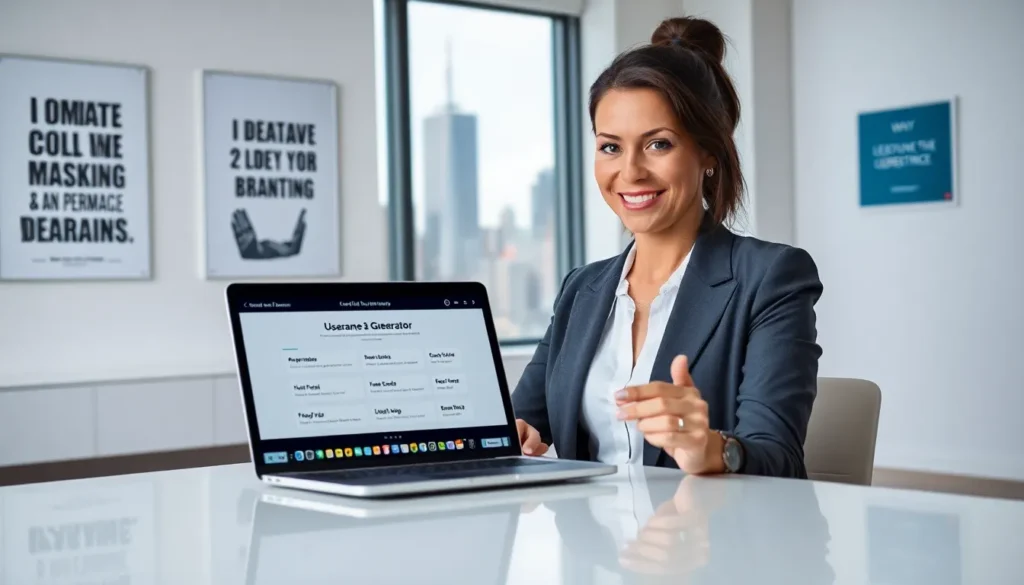Table of Contents
ToggleImagine a world where social media flips your expectations on their head. Sit down, strap in, and prepare for a wild ride because flip social media is here to change the game for digital engagement. If you’re tired of throwing content into the digital void only to watch it sink without a trace, it’s time to tune into what makes flip social media a revolutionary approach that could be your new best friend. Let’s jump into this unconventional landscape.
Understanding Flip Social Media

Flip social media, as the name suggests, is all about flipping traditional social media norms upside down. Unlike conventional platforms that often prioritize likes and follower counts, flip social media emphasizes meaningful interactions, quality content, and user-generated experiences. The term refers to the way users can share content in a more dynamic, engaging format that captures attention much more effectively than a simple status update. The twist? Users aren’t merely passive consumers on flip platforms: they become active participants, creators, and influencers. This shift towards involvement elevates the entire experience, making it engaging and interactive. It’s a world where every scroll can unearth a treasure trove of unique perspectives, compelling stories, and innovative ideas.
The Rise of Flip Social Media Platforms
The surge of flip social media platforms can be attributed to a growing dissatisfaction with conventional social media channels. Platforms like Instagram and Facebook, while still popular, often struggle with issues like algorithm changes and user fatigue. In their wake, flip social media has emerged. It taps into a desire for authenticity, simplicity, and connection without the noise. Sites like TikTok and Clubhouse exemplify this flip approach, focusing on brief, impactful interactions rather than endless scrolling and superficial interactions.
People want to connect without pretense, share without gatekeeping, and interact without the anxiety of ‘likes’ and follower counts. This wave of users craving more has led to a rapid rise in these platforms. As content creators and brands pivot their strategies to embrace flip social media, there’s a significant shift in how audiences engage online. In essence, flip social media is meeting a cultural moment where people are increasingly seeking genuine, relatable content.
Key Features of Flip Social Media
Benefits of Using Flip Social Media for Businesses
Companies increasingly recognize the power of flipping their social media strategy. Engaging content is no longer just a nice-to-have: it’s a necessity. Businesses leveraging flip social media can capture attention more effectively. For instance, a quick tutorial or a lively behind-the-scenes glimpse can resonate more than a polished advertising campaign.
Another significant advantage is the potential for virality. Content that’s authentic and entertaining tends to be shared far and wide, encouraging user participation and creating a snowball effect of engagement. Brands can also enjoy lower costs associated with paid advertising due to increased organic reach when users share their content.
Enhancing User Interaction and Content Sharing
Flip social media platforms encourage user interaction in exciting new ways. Think polls, challenges, and unfiltered live streams that invite feedback and participation. This constant back-and-forth prompts users to feel more connected and invested. In turn, it fosters communities built on shared interests and values, rather than sheer metrics like follower counts.
Not to mention, sharing is seamless on these platforms, making it easy for users to broadcast insightful or entertaining content to their networks. As a result, the potential for campaigns to reach wider audiences grows exponentially, benefiting businesses and creators alike.
Challenges and Considerations for Flip Social Media Users
While flip social media offers numerous advantages, it’s not without its challenges. One significant hurdle is the constant need for content creation. Users are expected to be not just passive consumers but also active contributors to the conversation, which can lead to burnout. It’s essential to find a balance: consistent posting is crucial, but not at the cost of creativity or well-being.
Also, the informal nature of many flip platforms may lead to challenges in maintaining a brand identity. It can be difficult for businesses to remain professional while also being relatable. Navigating this fine line requires strategy, context, and an understanding of the target audience. Also, privacy concerns have emerged as new platforms grow. Users need to remain vigilant about their personal information and content ownership, as these issues are increasingly prevalent in the digital landscape.
Future Trends in Flip Social Media
Looking ahead, several trends are likely to shape the future of flip social media. First, we can expect to see an emphasis on video content continuing to rise. Short-form videos have proven successful, making it essential for users and brands to adapt their content strategies accordingly.
Next, personalization will take center stage. Users crave tailored experiences that reflect their preferences and needs. As algorithms evolve, the ability to deliver customized content will become even more critical. Besides, expect enhanced collaborations between businesses and content creators as the line between influencer marketing and authentic connection continues to blur.
Eventually, the future of flip social media will hinge on innovation. Platforms that embrace and prioritize user engagement, without sacrificing authenticity, will likely thrive, creating a more vibrant, inclusive digital landscape.






